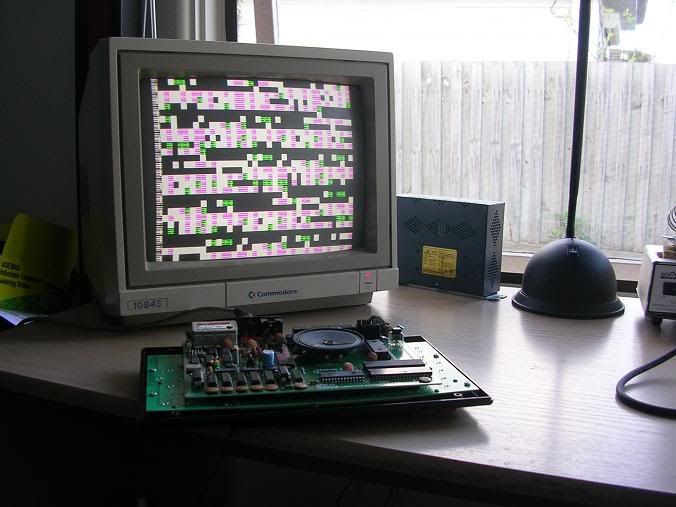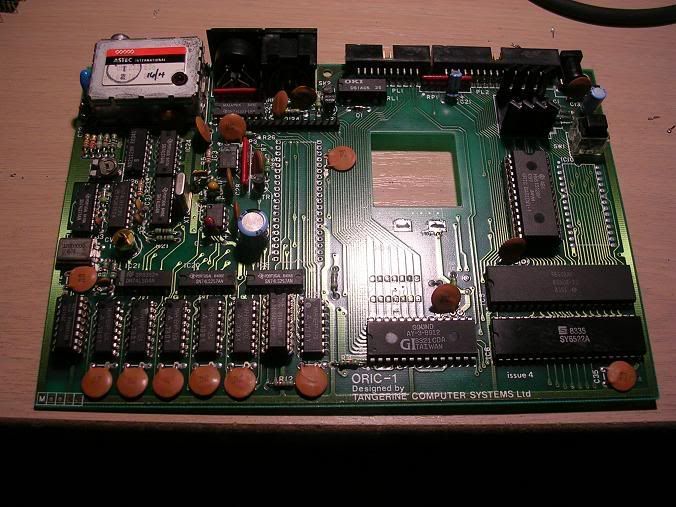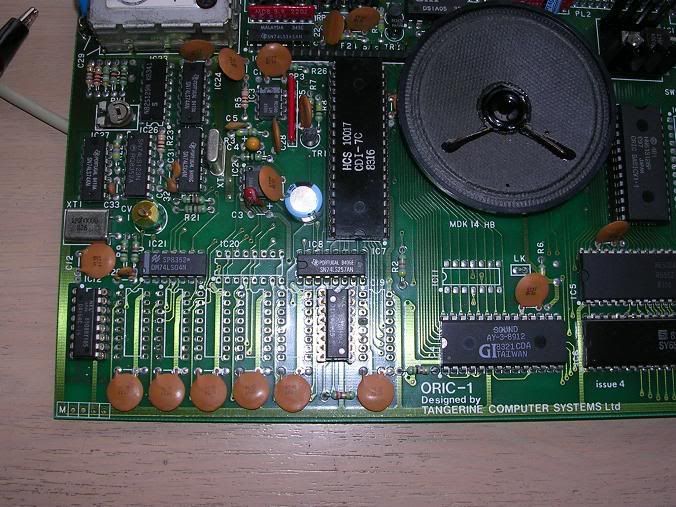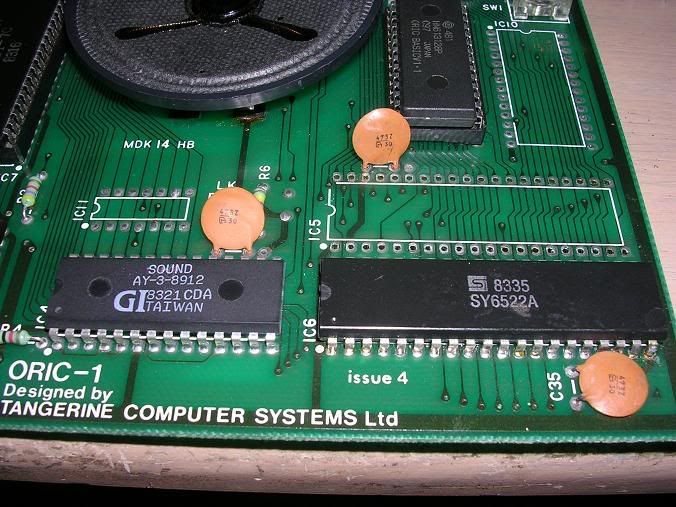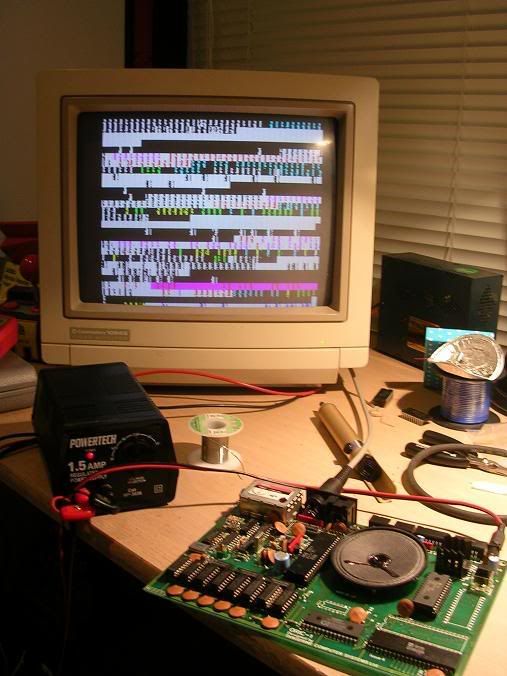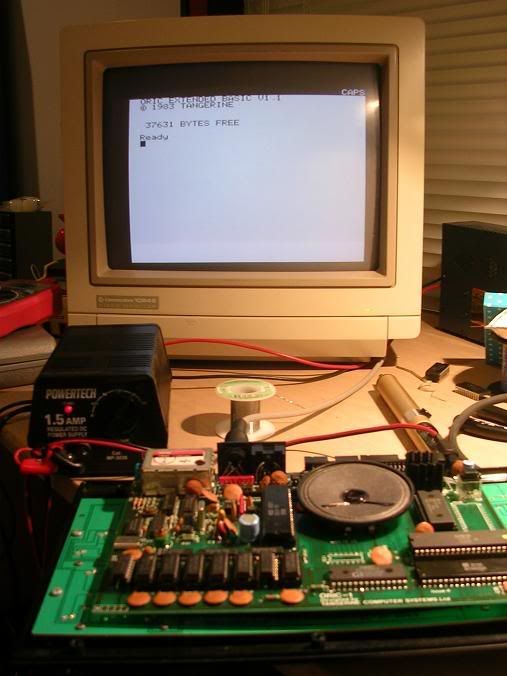This is pain in the rear for many reasons, firstly the video quality is not as good as it could be, secondly TVs only have 1 aerial input so you have to fiddle round the back of the TV and disconnect your main aerial feed if you use it. Thirdly you have the problem of PAL type, the majority of spectrums were made with PAL I (UK PAL) modulators, if you happen to live in a non PAL I country and don’t have a TV smart enough to auto detect you are stuck with black and white.
Wouldn’t it be great if you could hook up the Speccy to one of the multitude of AV sockets modern TVs have? The Speccy didn’t have composite out because TVs of that era didn’t have composite inputs. Fast forward 5-10 years and most TVs did, but the Speccy is stuck in the past.
There is a way round this - and it is so simple it’s laughable; you need about 10 minutes, a soldering iron, and 4cm of thin wire. This modification also involves no visible changes to the case, no drilling, no cutting, and in fact the RF socket will still be the output method for the video - except it will be giving composite video out instead of RF. Happily the RF output socket is an RCA socket so you just hook up your yellow AV cable to the Speccy’s RF socket and you are away.
The trick is that the Speccy actually feeds composite video into the RF modulator in the 1st place, it modulates this to broadcast RF signals, TV is tuned to the output signal and dutifully converts it back in to composite for display. Naturally all this processing degrades the image and nowadays is totally unnecessary.
Heres how to do it - some of these photos are quite big, its hard to see what's going on when I shrank them, so I unshrank them.
Unscrew the 5 screws underneath that hold the case together. Lift the upper portion of the case off the lower and bring it towards you until you see the 2 ribbon cables attaching the keyboard to the main board. You don’t have to disconnect these but I would, you are more likely to strain them by leaving it connected while you work on the system than by removing and reconnecting them afterwards. By the way - this is the only risky part of the procedure, these keyboard membranes were never the most robust component and aged ones are probably more fragile - don’t strain or bend them ribbons.
There is one screw in the centre of the board that holds it to the lower case, unscrew this and remove the board.

In the rear left hand corner there is a metal box, this is the RF modulator, the lid is only clipped on - pop it off.
Now you can see what’s behind the RF socket, you will see a resistor standing on end in a small plastic tube, the upper leg is soldered to the central pin of the socket.

you need to unsolder that and bend the it away from the pin (Crap camera angle coming up... - you can just about see it in this shot. Tis easy to see what I mean if you have one in front of you tho).

You will also see 2 wires going into the RF box on the left hand side - one of these wires goes through a plastic insulator - that’s the video feed, clumbsily labelled V on the image.
The other one goes through a silvery nub is the +5V power feed for the modulator - we need to disconnect both of those wires. You could leave the modulator powered up but there is little point, also all the RF frequency circuitry could in theory interfere with the signal you are passing out the back in close proximity, so you might as well leave it powered off.
The 5V wire is just soldered to the upper of the board, unsolder it and bend it up out of the way as shown above. Just the video wire to disconnect, this is soldered through the board to the composite video signal line.
The video feed is soldered from beneath.

...unsolder this wire and bend it out of the way too. Make sure these 2 wires don’t touch anything or each other - you could put a piece of heat shrink insulation on both if you are enthusiastic enough.
Now Sinclair very handily chose a modulator with 2 holes through the plastic insulator on the side of the modulator, so you don’t even have to work out a way to get the wire to the socket. Pass your 4cm of thin wire through the second hole and solder the end to the central pin on the output socket. Solder the other end to where the RF box got its video input originally.
You can see the new yellow wire going from the old feed to through the second hole, also the old 2 connections detached and bent out of the way.

And that’s it - the ground on the Speccy is all common so the ground on the RF box and sleeve of the video socket is already connected up.
Double check you have wired everything as per the photos and put the Speccy back together. Connect "Der Computor" up to the telly.

Et Voila - a Speccy connected to my TV on input AV2.

Yay!
By the way – I didn’t invent this, it’s not even a recent discovery – it was described in some detail in a 1986 Crash magazine. There are also little FAQ text files from the bulletin boards of the early 90s floating around the web – but they all seem to make it sound harder than it is, and none had photos of the process which shows how simple it really is. Plus they all seem to advocate leaving the RF connected up and running a flying cable out the back of the unit – and or drilling a big hole in the case to have the feed dangling out the back – both are no-nos in my book, if I want an old system it has to be physically intact, cutting big holes is not an option, especially as it can be so damn neat as the above shows. It’s another 10 min job to reconnect the RF later if you decide you really do need it – but I can’t see why anyone would ever go back again.

